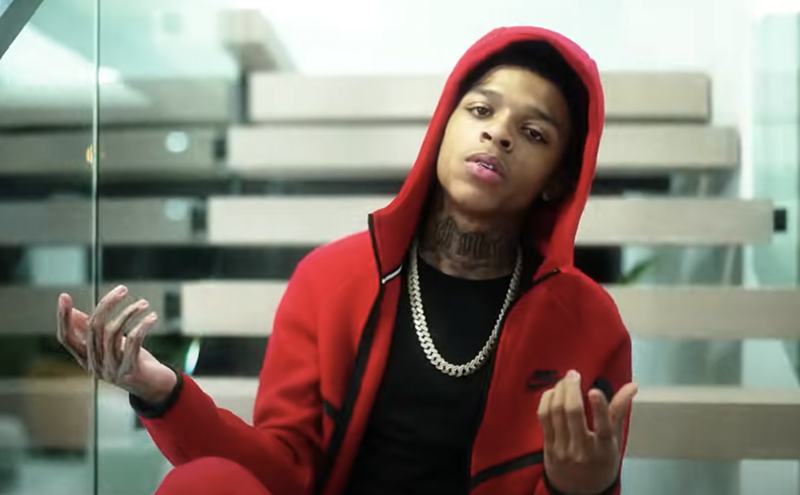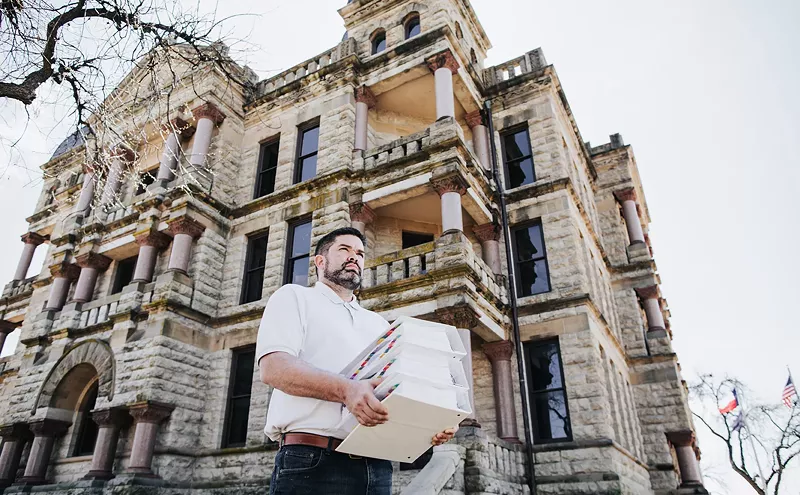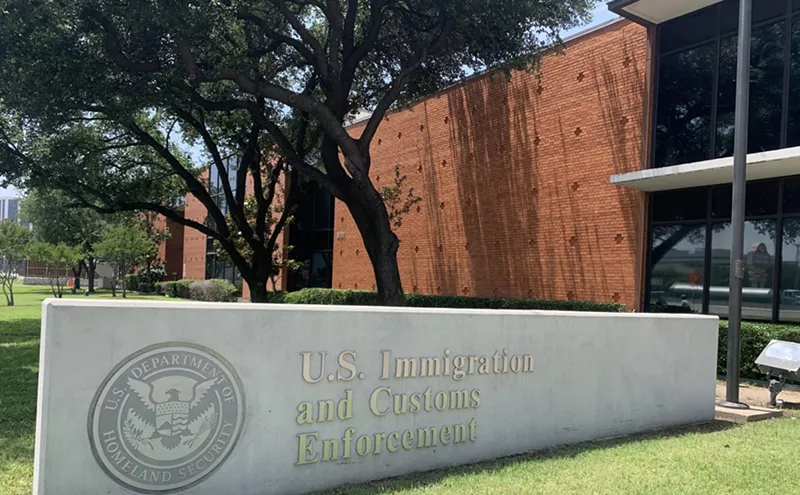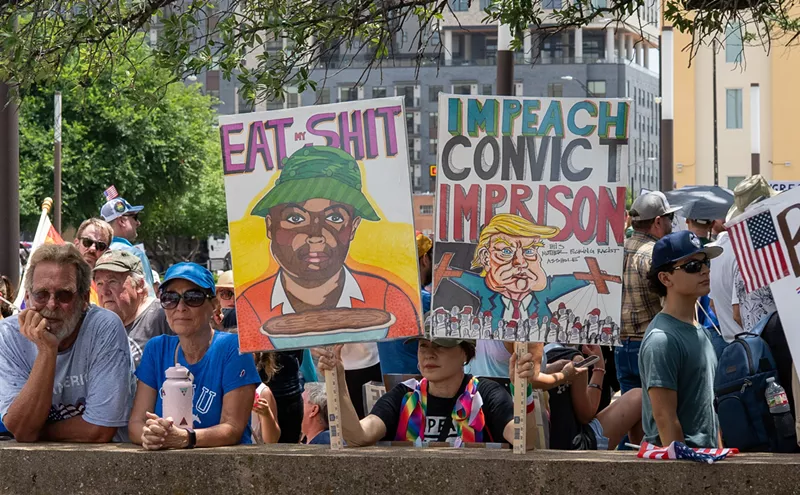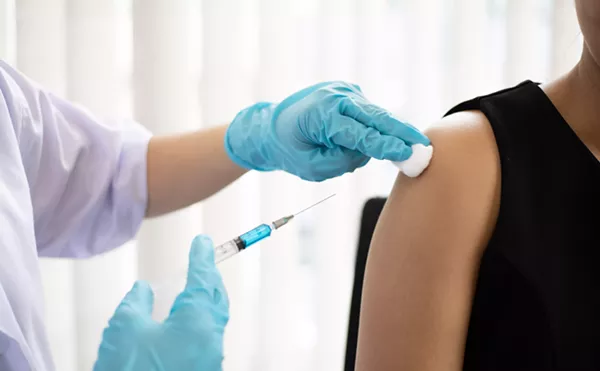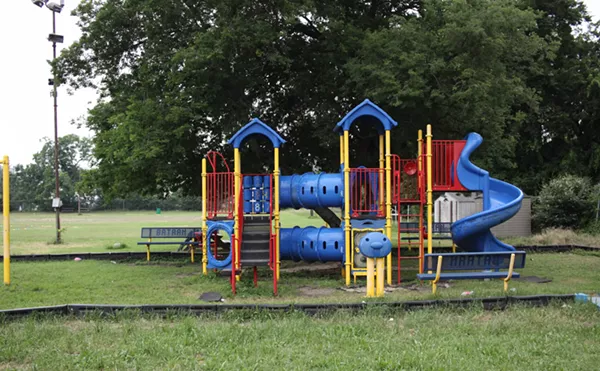Soon after the May 24, 2022, murders of 19 students and two teachers, ABC News opened a bureau in the town of around 15,000 about an hour south of San Antonio to report on the shooting’s aftermath and the people in the town who had to find a way to keep going. Now, Uvalde 365 from ABC News is a trove of more than 250 breaking news items, longform features, digital presentations and investigative reports.
The latest effort from Uvalde 365, Print It Black, will have its world premiere at the Dallas International Film Festival on Sunday, April 28.
The documentary’s title refers to the decision by the Uvalde Leader-News to run only a large black block on the front page on May 26, 2022, with only “May 24, 2022” in white letters near the top of the block. As profound, and surely accurate, a statement as that ominous symbol was, much of the film’s heart comes from the pictures and footage taken from the paper’s photographer and general manager, Pete Luna.
In the nearly two years since the shooting, the story of what was not done by law enforcement has grabbed the most headlines related to the Uvalde massacre. A total of 77 minutes passed between the gunman’s first shots on the Robb Elementary campus and the moment police finally breached the Room 111 classroom door and killed the gunman, 18-year-old Salvador Ramos.
ABC News investigative producer Tomas Navia said that to him and some of his fellow news producers, there were early signs that “something had gone amiss” with regard to the tragically slow police response to the attack. To Navia and his colleagues, there were stories that needed to be looked into and told.
“Just watching from afar, everybody, I think, in Texas and around the world, didn't quite understand why it took so long for law enforcement to interfere,” Navia told the Observer. “One of our executive producers, Cindy Galli, said, ‘What if we stay? So many news organizations, when these horrible tragedies happen, they’ll flock to the site where it happened and then report on the breaking news and then leave when the next big thing happens.’ So we decided to stay in the community.”
“Just watching from afar, everybody, I think, in Texas and around the world, didn't quite understand why it took so long for law enforcement to interfere." – Tomas Navia, ABC News
tweet this
The focal point of the film is the small staff of the Leader-News and how they personally reacted to and professionally covered the tragedy and its fallout in Uvalde. But the film’s heart is one specific member of that news team: Kimberly Mata-Rubio, a mother who lost her daughter, 10-year-old Lexi Rubio, in the shooting, worked as a crime reporter for several years prior to 2022. In a small town, bad news travels at the speed of light, and as information on what had happened at Robb Elementary spread, the small staff wrestled with the line separating their jobs from their lives.
In the film, various staff members recall the chaos and uncertainty not only of the fateful day, but of the weeks and months following. Because Uvalde is such a tiny community, it’s tremendously difficult to find many around town who aren’t connected to the tragedy in some way. That close, personal bond between reporter and subject made an already difficult scenario even more so for the writers of the Uvalde Leader-News.
In larger cities, a reporter can write unflattering pieces on the mayor, city council or the chief of police and likely never interact with them afterwards unless it’s in a controlled, professional capacity. In a town like Uvalde, such separation just doesn’t exist. As 2022 rolled towards and into 2023, the eyes of the nation, and especially of the families of the 21 who were murdered at Robb, waited to see how the national, state and local governments would react.
Perhaps no one was under more scrutiny as a symbol for the unspeakably inept police response than the Uvalde school district police chief, Pete Arredondo. While news outlets from around the country questioned the chief’s decision-making and lack of organization in the hallway outside of classrooms 111 and 112, local reporters had to grapple with where to find the balance between questioning authority as journalists and being good neighbors.
In one of the more achingly moving moments in the film, of which there are far too many to count, one of the newspaper’s staff writers, Julye Keeble, summed up the stark reality facing her team in Uvalde: “We’re a small town,” she said. “Not only are the police the ones that enforce the laws, but they’re our neighbors, they’re our friends, they’re the people we go to the grocery store and post office with. And it's very hard to look at somebody who’s an intrinsic part of the community and wonder, ‘Did you just stand there and let my friend’s child die?’”
As the film draws to a close, the pain that began with so much loss in the spring brings about a new type of pain in the fall of 2022. In the months between May and November 2022, Mata-Rubio and many other parents and relatives of those who were killed became high-profile, highly vocal gun control activists.
Uvalde has long been a very red area politically, and the Second Amendment is adored as fiercely there as anywhere else in the state. As the campaigns for the 2022 gubernatorial election grew more intense, so did the divide in Uvalde between the families of the slain and the residents who didn’t want to see anything change. The yard signs proclaiming “Uvalde Strong,” in many ways seemed more like empty decorations than the symbols of resilience they had been originally.
“But how do you move on from that?” Navia asked. “And so there, I think, are people in the community that do support these families and survivors, but as is clear with the reelection of Gov. Abbott over Beto [O’Rourke], that was very disappointing for the families [of those killed at Robb Elementary]. Kimberly [Mata-Rubio] herself just ran for mayor, and she got about a third of the vote, but she didn’t win. I think it’s just a place that is used to and likes the status quo.”
The need for many in the town to have status quo was apparent in the film when a group of Robb Elementary families stood outside of the school district offices, seeking accountability from the officers who failed to save their kids. As they carried signs and pictures of the kids who died, one motorist driving by shouted “Move on!” at the group.
Some of the scenes showed Mata-Rubio, who said she and her family will never leave Uvalde because “that’s where Lexi is,” campaigning for gun reforms. It’s a task she and many of those she’s forever connected to now will likely never give up. During a listening session before U.S. representatives from Texas, she delivered a powerful message about what the future holds for America’s children should the lessons of Robb Elementary go unheard.
“I apologize in advance because it’s not a good day, and I’m not prepared,” she said through tears. “I don’t have a blueprint for how to live when your 10-year-old daughter is murdered in her classroom. But I think the state and our nation should have a road map by now. This is not the first mass shooting, it will not be the last, until we federally ban these weapons. So you better get really good really fast at how to deal with the aftermath.”
Print It Black screens during the Dallas International Film Festival at 1 p.m. on Sunday, April 28, and at 4:30 p.m. on Monday, April 29, at the Violet Crown, 3699 McKinney Ave.




